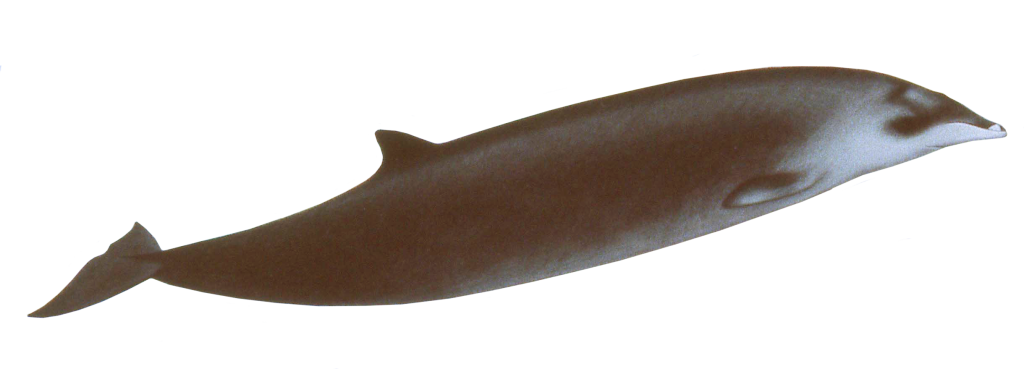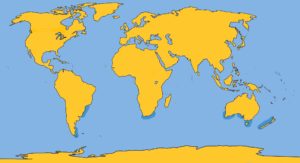Family: Ziphiidae
Genus: Mesoplodon
Species: M. hectori (Gray, 1871)
Hector’s beaked whale is known from fewer than a dozen skulls and a few observations or strandings; almost nothing is known about the animal. It was described originally as Arnoux’s beaked whale, but in 1970 J.C. Moore and J.G.B. Ross established it as a separate species.
Physical Description: They have a streamline-shaped body with well-defined beaked whale features. Body scarring suggests fights between males, which is common among all of the beaked whales.
Color: Dark gray-brown dorsally, lighter ventrally. Adults have a white beak and white on both sides of the head. The melon slopes steeply to the rostrum.
Fins and Flukes: The tiny flippers are dark with lighter color toward the tips. The small dorsal fin is triangular, slightly falcate and rounded at the tip. The flukes are well developed and pointed at the tips.
Length and Weight: These beaked whales reach a maximum length of 13.75 ft (4.2 m) and an estimated weight of 1 ton (1,000 kg).
Teeth: Adults have a pair of small, flat, triangular teeth near the tip of the lower jaw, which only erupt in the males.
Feeding: Assumed to be deepwater fish and squid.
Breathing and Diving: No information available.
Mating and Breeding: No information available.
Herding: No information available.
Distribution: They seem to be confined to the circumpolar temperate latitudes of the Southern Hemisphere. Most sightings and records are from New Zealand, the Falkland Islands, South Africa, Tasmania, and Tierra del Fuego.
Migration: No information available.
HECTOR’S BEAKED WHALE DISTRIBUTION







